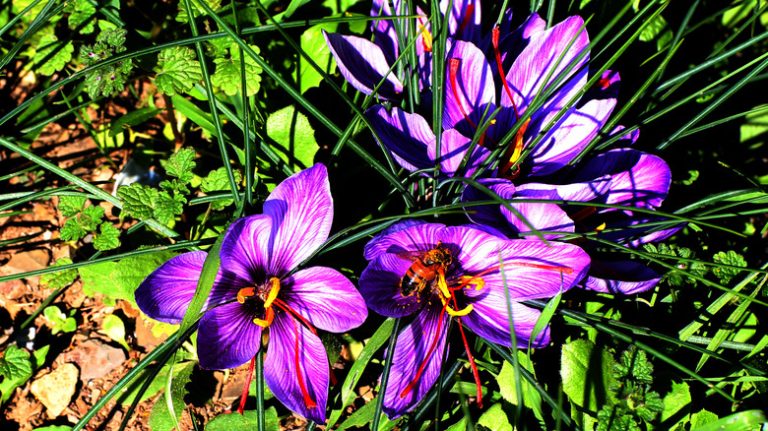Echinacea, commonly known as coneflower, is a beautiful and easy-to-grow plant that belongs to the daisy family. It is native to North America and can be seen growing in the wild in various parts of the country. Its striking purple or pink flowers with a cone-shaped center make it a sight to behold. Echinaceas are well-suited for growing in containers, which is particularly suitable for those who don’t have a lot of outdoor space.
When planting echinaceas, they should be placed in a sunny spot with well-drained soil. It is important to consider the planting conditions because echinaceas love full sun and don’t tolerate wet or clay soils. The best time to plant echinaceas is in early spring, when the temperature starts to warm up and frost is no longer a concern.
Echinaceas are known for their tolerance to a variety of growing conditions. They are usually not bothered by pests like snails or weevils. However, if these little critters become a problem, there are naturalistic solutions such as sprinkling crushed eggshells or diatomaceous earth around the plants. Echinaceas also don’t require much fertilizing, as they can thrive in poor soil. However, if you want to give them a nutrient boost, a light application of fish emulsion or balanced fertilizer once a year is sufficient.
If you have any questions or run into any problems, there are some common FAQs when it comes to echinacea plant care. One frequently asked question is how to prune echinaceas. The answer is simple: just remove any dead or faded flower heads to encourage further blooming. Another question is how to protect echinaceas from winter frost. The best way is to mulch around the base of the plants with a layer of straw or leaves. This will help insulate the roots and prevent damage from freezing temperatures.
In conclusion, echinaceas are beautiful and low-maintenance plants that can easily be grown in containers or outdoors. They are loved for their stunning flowers and their ability to attract butterflies and bees. With proper care and suitable growing conditions, echinaceas can thrive for many years, adding a touch of color and beauty to any garden or landscape. So, if you love flowers and enjoy spending time in the garden, consider adding echinaceas to your plant collection!
ECHINACEA CONEFLOWER
The Echinacea coneflower is a popular plant among gardeners, both in containers and in the garden. While generally easy to care for, there are a few things to keep in mind when growing this beautiful purple flower.
Echinacea coneflowers are quick to grow and can tolerate a variety of soil conditions. They prefer well-draining soil and should be planted in an area that receives full sunlight, although they can also tolerate partial shade. They benefit from regular watering, especially during dry spells.
One of the most frequently asked questions about Echinacea coneflowers is how to prevent common pests and diseases. Hand-picking snails and weevils can help control these pests, and applying a natural insecticide can further prevent infestations. Good airflow and avoiding over-watering can help prevent diseases like powdery mildew.
Deadheading the flowers is recommended to encourage ongoing blooming. This means removing the faded flowers to promote the growth of new ones. Additionally, cutting back the plant in late fall or early spring can help manage its spreading nature and keep it tidy.
Propagation of Echinacea coneflower can be done through seedlings or by dividing established plants. Seeds can be sown in pots or directly in the garden in the fall. Dividing the plants in early spring or fall helps maintain their health and encourage new growth.
Eastern and American varieties of Echinacea purpurea are two common types of coneflowers. The eastern variety grows to about two feet tall, while the American variety can reach up to four feet. Both types have showy purple flowers that attract hummingbirds and are a sight to behold.
In colder areas, it is important to protect Echinacea coneflowers from harsh frosts. Adding mulch around the base of the plants can help insulate the roots and prevent freeze damage. In warmer regions, the plants can survive year-round and provide continuous blooms.
In conclusion, Echinacea coneflowers are lovely perennials that can be easily grown in gardens or containers. With proper care, they can thrive and provide a beautiful display of purple flowers year after year.
WHERE TO BUY ECHINACEA
If you’re wondering where to buy Echinacea, you’re in luck! The Echinacea plant is widely available and can be found at most garden centers, nurseries, and online retailers. Here are a few options for purchasing Echinacea:
| Retailers | Online Stores |
|---|---|
| Local garden centers | Online plant nurseries |
| Nurseries | Specialty herb and perennial plant stores |
| Home improvement stores | Seed suppliers |
| Farmers markets | E-commerce websites |
There are many varieties of Echinacea available, including different flower colors, heights, and petal shapes. When choosing which variety to buy, consider the growing conditions in your area. Echinacea is generally easy to grow and suitable for a wide range of soil types, including clay areas. If you’ll be growing Echinacea in a container, make sure to choose a variety that’s suitable for pot culture.
If you’re unsure which variety to buy, consider purchasing Echinacea divisions instead. Divisions are small sections of mature Echinacea plants that can be transferred to your garden or container. These divisions are usually available for purchase in early spring or fall.
When buying Echinacea plants, look for healthy specimens with no visible signs of pests or diseases. The foliage should be a vibrant green, and the plants should have a sturdy stem and well-developed root system.
Keep in mind that Echinacea can attract beneficial insects, like bees and butterflies, to your garden. However, it can also attract pests such as the Echinacea weevil. To prevent problems with weevils, lightly sprinkle neem oil on the plants every few weeks.
Echinacea plants are generally hardy and can tolerate a wide range of temperatures. They prefer full sun but can also grow in areas with partial shade. Make sure to provide them with well-draining soil and water regularly, especially during hot and dry periods.
In the winter, Echinacea plants go dormant. It’s important to cut back the dead foliage to prevent disease and maintain the overall health of the plants. However, don’t remove the flower heads, as they can add interest to your garden during the winter months.
In summary, Echinacea is a popular plant that’s easy to find and purchase. Whether you choose to buy it from a local retailer or an online store, make sure to choose high-quality plants that are suitable for your growing conditions. With proper care, you’ll have beautiful and healthy Echinacea plants to enjoy year after year.
HOW AND WHEN TO PLANT ECHINACEA
When it comes to planting Echinacea, timing is key. These beautiful flowers are best planted in late spring or early summer, when the soil has warmed up and the last frost has passed. Planting at this time ensures that the wildflower native to North America has plenty of time to establish itself before the harsh winter arrives.
To plant Echinacea, choose a suitable location that receives full sun for at least six hours a day. Echinacea purpurea, the most common variety, is particularly adaptable and can thrive in a wide range of soil types, although it prefers well-draining soil.
Prior to planting, prepare the soil by amending it with organic matter such as compost or well-rotted manure. This will help improve the soil’s fertility and drainage. You can also add a slow-release organic fertilizer to give the Echinacea a nutritional boost.
When planting Echinacea, dig a hole that is twice as wide as the root ball and just as deep. Gently loosen the roots before placing the plant in the hole, making sure it is level with the surface. Backfill the hole with soil, firming it gently around the plant to eliminate any air pockets.
After planting, water the Echinacea thoroughly to settle the soil and encourage root establishment. However, be careful not to overwater as Echinacea plants are drought-tolerant and prefer a little bit of dryness. Once established, these hardy plants only need to be watered during dry spells or prolonged periods of drought.
It’s also important to note that Echinacea plants don’t like high humidity, so it’s best to avoid planting them in areas with poor air circulation. If you live in a humid climate, consider planting them in a raised bed or container with good drainage to prevent waterlogged roots.
In terms of care, Echinacea plants are relatively low-maintenance. They require minimal fertilization and can benefit from a layer of mulch to conserve moisture and suppress weed growth. Regular deadheading, removing spent blooms, will encourage the plant to produce more flowers and extend the blooming period.
Echinacea plants are generally resistant to pests and diseases. However, they can be susceptible to fungal diseases and weevils, which can be controlled with organic remedies like neem oil or insecticidal soap. To keep snails and slugs at bay, surround the plant with a protective barrier or use organic slug pellets.
With their vibrant colors and distinctive cone-shaped heads, Echinacea plants are not only a beautiful addition to any garden but also a valuable source of nectar for bees, butterflies, and hummingbirds. These pollinators are particularly attracted to the pink, purple, and white varieties of Echinacea.
In conclusion, when it comes to planting Echinacea, choose a sunny location with well-draining soil, prepare the soil with organic matter, and water thoroughly after planting. Once established, Echinacea plants require minimal care and can be enjoyed year after year. For more information on Echinacea plant care, consult gardening references or check online resources like gardening websites and forums.




